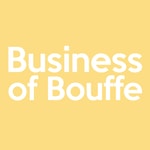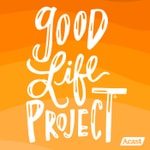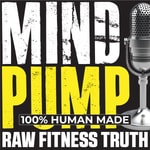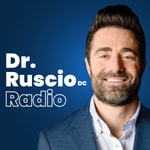Meet the Microbiologist – Détails, épisodes et analyse
Détails du podcast
Informations techniques et générales issues du flux RSS du podcast.
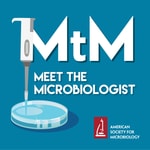

Classements récents
Dernières positions dans les classements Apple Podcasts et Spotify.
Apple Podcasts
🇺🇸 États-Unis - lifeSciences
08/08/2025#89🇨🇦 Canada - lifeSciences
06/08/2025#89🇬🇧 Grande Bretagne - lifeSciences
06/08/2025#99🇨🇦 Canada - lifeSciences
05/08/2025#72🇬🇧 Grande Bretagne - lifeSciences
05/08/2025#82🇨🇦 Canada - lifeSciences
04/08/2025#63🇬🇧 Grande Bretagne - lifeSciences
04/08/2025#73🇨🇦 Canada - lifeSciences
03/08/2025#55🇬🇧 Grande Bretagne - lifeSciences
03/08/2025#58🇨🇦 Canada - lifeSciences
02/08/2025#39
Spotify
Aucun classement récent disponible
Liens partagés entre épisodes et podcasts
Liens présents dans les descriptions d'épisodes et autres podcasts les utilisant également.
See all- http://www.virology.ws/
73 partages
- https://impossiblefoods.com/
57 partages
Qualité et score du flux RSS
Évaluation technique de la qualité et de la structure du flux RSS.
See allScore global : 69%
Historique des publications
Répartition mensuelle des publications d'épisodes au fil des années.
When Proteins Become Infectious: Understanding Prion Disease With Neil Mabbott
Épisode 158
vendredi 23 août 2024 • Durée 55:53
From Bovine Spongiform Encephalopathy (BSE) to Creutzfeldt-Jakob disease (CJD), Neil Mabbott, Ph.D., has worked for nearly 2 decades on understanding the mechanisms by which prion proteins become infectious and cause neurological disease in humans and animals. He discusses the remarkable properties of prions and addresses complexities surrounding symptoms, transmission and diagnosis of prion disease.
Trillion Dollar Microbes Make the Bioeconomy Go Round With Tim Donohue
Épisode 157
mardi 28 mai 2024 • Durée 49:03
Take the MTM listener survey! Ashley's Biggest Takeaways:
- The bioeconomy can be broadly defined as the use of renewable resources, including microorganisms, to produce valuable goods, products and services.
- Microbes have the potential to create products that cannot be made by existing synthetic chemistry routes.
- Using raw, renewable resources to create a circular bioeconomy is beneficial to the environmental footprint, economic footprint and supply chain security around the globe.
- The theme of our Spring 2024 Issue of Microcosm, our flagship member magazine is Microbes and the Bioeconomy: Greasing the Gears of Sustainability, launches this week and features an article based on this MTM conversation. If you are an ASM Member, check back on Wed., June 30 for the newly published content! Not a member? Consider renewing or signing up today, and begin exploring endless potential to boulster your career and network with professionals, like Donohue, in your field.
- Get Bioeconomy Policy Updates.
- Heading to ASM Microbe 2024? Check out this curated itinerary of sessions on the bioeconomy, including those discussing the use of algae for bioproduction and synthetic biology for natural product discovery.
- Learn more about the Great Lakes Bioenergy Research Center.
- MTM listener survey!
Microbial Flavor Profiles for Bread and Wine Production With Kate Howell
Épisode 148
vendredi 14 juillet 2023 • Durée 37:38
- Saccharomyces means sugar-loving fungus.
- Humans have similar olfactory structures and mechanisms as insects and are similarly attracted to fermenting or rotting fruits produced by Saccharomyces.
- Research has shown that insects (and humans) prefer yeasts that produce more esters and aromatic compounds.
- Palm wine is a product that is made from sap collected from palm trees (palm sap) across the tropical band of the world.
- Fruity flavors appear to be less important to persistence of Saccharomyces strains in an Indonesian palm wine fermentation.
- This may be because palm wine fermentation is very quick, generally 1-3 days often, with a maximum of 5 days for fermentation to be conducted.
- Wineries, on the other hand, ferment annually (one fermentation per year/vintage), when the grapes are right. Grape wine fermentations can take 7 days to 2 weeks to complete.
- So different selections likely take place between the 2 fermentation products.
When we start drawing our lens on how microbes produce food for humans, we're coopting a process that happens quite naturally. Here I'll start off talking about Saccharomyces cerevisiae, the main fermenting yeast in food and beverage production, because it's one of the most studied organisms and was the first eukaryote to be sequenced.
Saccharomyces cerevisiae, as the name implies, loves sugar, and it flourishes when there's a lot of sugar in the environment. Where is sugar found? In fruits, and that's done quite deliberately, because fruits develop sugars and flavors and aromas to attract a birds or insects or anything else that can carry their seeds elsewhere for dispersal.
Now, Saccharomyces lies dormant in the environment in a spore before it encounters a sugar-loving environment. And then it replicates very quickly and tends to dominate fermentation. Humans have coopted that into our kitchens, into our meals, into our lives, and we use that process to produce food.
As Saccharomyces starts to use this sugar, it balances up its metabolism. And as it does this, it produces aromas. These aromas have a lot of important characteristics. Humans love them, but insects also love them too.
I've been interested in the yeasts that are found naturally in sourdough starters. Sourdough is a really interesting system. Because you've got yeast and bacteria interacting with one another.
One of the things we are collaborating on with colleagues in France at Inrae, Dr. Delphine Sicard, is to understand some of the non-Saccharomyces yeasts that are naturally occurring in sourdough starters. So here we're looking at a collection of a yeast called Kazachstania humilis and trying to understand how it has adapted to the sourdough environment, how its sustained over time and how different global populations differ to one another.
And this, of course, is of interest to the baking industry because not only do artisanal bakers have sort of an undiscovered wealth of biodiversity in their starters, baking companies also have an interest in using different sorts of flavors and bread for the commercial markets.
The connection between a chemical profile and a person’s sensory preference isn't something that's complete and direct. So, in every method that we use, there's always caveats, but we try to correlate it. Let's start off with the chemical characterization. We use headspace sampling, analytical chemistry, separation with gas chromatography and identification with mass spectrometry.
And we use different 2-dimensional methods to be able to understand what the very small compounds are, and to be able to identify them. We can semi-quantify these to be able to make comparisons between different fermentations.
We know from wine fermentations and understanding preferences of wine that, in some cases, a particular increase, or an abundance of a particular compound, can be extremely attractive. And that might depend on the style of wine.
What we've discovered through this process is that different people prefer different flavors. Makes sense, doesn't it? We like different things. But some really interesting results from our lab, show that people from different cultural backgrounds have different preferences. And here we're using here in Melbourne, I'm very lucky to work with some very talented postdocs and Ph.D. students from China, who have very different preferences for wine than an Australian does. Of course, Australians are quite heterogeneous in their in their cultural diversity as well. But there's certain flavors that our Chinese colleagues tend to prefer. So we decided to investigate this a little bit more.
So for this study, we recruited wine experts from Australia, actively working in the wine industry, and also wine experts from China, working in the wine industry, and brought them to campus and ask them to rate their preferences on particular aromas and flavor characteristics that they noted in a panel of wines. These were very high-quality wines. We knew with wine experts, we couldn't just give them our loved wines, for example, which can be a little bit patchy quality wise. We asked them to rate their preferences, and then we collected saliva samples.
The saliva samples were really interesting. We looked at 2 different aspects. We looked at the proteins that were present in the saliva samples. And we also looked at the oral microbiome. So the salivary microbiome—the bacteria, in particular—that are present. We found some really interesting things. And this has sparked a big area in our lab.
So while the main enzymatic activities in the different groups of participants were quite similar—so esterase activity, Alpha amylase activity were similar—we found that there was a difference in the abundance of proline rich proteins and other potential flavor carrying compounds. Now, this is quite speculative. We'd like to know why this is the case. And so we're delving a little bit further into this area.
What we do know though is that the abundances, especially if these proline rich proteins, is correlated with how people perceive the stringency. Now stringency is one of those characteristics in wine which is quite difficult to appreciate. It’s a lack of drying characteristic on the tongue and in the mouth and oral cavity. Some people find it quite attractive, others don't.
But we found that the abundance of these polyproline-rich proteins correlates with stringency. This is, in fact, found in other studies because proline-rich proteins interact with polyphenols in the wine, and precipitate, which changes the sensation of astringency in the oral cavity. So here we've got a nice link to protein abundance and how people perceive flavor. But we're talking about microbiology, so maybe I should delve into the microbiological aspects of these studies as well.
In that particular study that I'm referring to, we used wines that were naturally fermented, and that's the other variability that we need to consider when we think about wines from different areas. So, a natural fermentation, in a wine sense, is the grapes are harvested, and whatever microflora is present on the grapes will just ferment, and we often don't know what the main fermenting parties are. But if you contrast that with a majority of commercial wine that's produced, mainly in Australia, but also worldwide, it's inoculated with a selected strain of Saccharomyces or maybe 2 selected strains of Saccharomyces, and that tends to produce a fairly similar flavor profile, regardless of region.
So, you can flatten out geographical characteristics and indications of flavor by inoculating a particular strain of yeast to ferment. That's not true with a natural fermentation, because that's conducted by the yeasts, and also the bacteria which just happened to be in the environment. So, I agree with you there is a lot of regional variation with wine flavor. And we can correlate that with regional diversity of yeast, but only if the wines are naturally fermented not if they're inoculated with a selected strain.
- LC-ESI-QTOF/MS Characterisation of Phenolic Acids and Flavonoids in Polyphenol-Rich Fruits and Vegetables and Their Potential Antioxidant Activities.
- Frozen, canned or fermented: when you can't shop often for fresh vegetables, what are the best alternatives?
- Early Prediction of Shiraz Wine Quality Based on Small Volatile Compounds in Grapes.
- Building the climate resilience of Melbourne's Food System.
Let us know what you thought about this episode by tweeting at us @ASMicrobiology or leaving a comment on facebook.com/asmfan.
MTS60 - Thomas Scott - The Bone-Breaking Virus (29.5 min.)
mercredi 20 octobre 2010 • Durée 29:44
In this podcast I talk to Thomas Scott of the University of California, Davis, about dengue fever, a disease that's on the rise. Spread by mosquitoes, it can make you feel as if your bones are broken and leave you exhausted for months. In more serious cases, people suffer uncontrollable bleeding and sometimes die. Dengue is expanding its range, and is even making incursions into the United States. Scott and I talk about what scientists know and don't know yet about dengue, and what the best strategy will be to drive the virus down.
MTS59 - Charles Ofria - Digital Life
mercredi 6 octobre 2010 • Durée 45:19
In this podcast I talk to Charles Ofria, a computer scientist at Michigan State University.
Ofria and his colleagues have created a program called Avida in which digital organisms can multiply and evolve. They are studying many of evolution's deepest questions, such as how complexity evolves from simplicity and why individuals make sacrifices for each other. The evolution unfolding in Avida is also yielded new software that can run robots and sensors in the real world.
Bonus Content includes:
Avida Movie
In this movie, we started with a normal Avida organism in the middle of the population and let it grow for a while before injecting a highly-virulent parasite into the middle. The hosts are all colored with shades of blue and the parasites are shades of red.
MTS58 - David Baker - Crowdsourcing Biology
jeudi 23 septembre 2010 • Durée 24:26
In this podcast I spoke to David Baker, a professor of biochemistry at the University of Washington. Baker and his colleagues study how proteins fold, taking on the complex shapes that make our lives possible.
It turns out that protein folding is a fiendishly hard problem to solve, and even the most sophisticated computers do a poor job of solving it. So Baker and his colleagues have enlisted tens of thousands of people to play a protein-folding game called Foldit. I talked to David Baker about the discoveries they've made through crowdsourcing, and the challenges of getting 57,000 co-authors listed on a paper.
Additional Resources:
MTS57 - Forest Rohwer - Curing the Corals
mercredi 1 septembre 2010 • Durée 23:52
It never occurred to me that the human body and a coral reef have a lot in common--until I spoke to Forest Rohwer for this podcast. Rohwer is a microbiologist at San Diego State University, and he studies how microbes make coral reefs both healthy and sick. Just as we are home to a vast number of microbes, coral reefs depend on their own invisible menagerie of algae and bacteria to get food, recycle waste, and fend off invaders. But as Rohwer writes in his new book, Coral Reefs in the Microbial Seas, we humans have thrown this delicate balance out of kilter, driving the spread of coral-killing microbes instead.
Additional Reading:
Viral communities associated with healthy and bleaching corals.
The lagoon at Caroline/Millennium atoll, Republic of Kiribati: natural history of a nearly pristine ecosystem.
Metagenomic analysis of stressed coral holobionts.
MTS56 - Susan Golden - Clocks for Life
mercredi 18 août 2010 • Durée 28:05
In this podcast, I talk to Susan Golden, the co-director of the Center for Chronobiology at the University of California at San Diego.
We talked about Golden's research into time--in particular, how living things know what time it is. While you may have heard of our own "body clock" that tracks the 24-hour cycle of the day, it turns out that some bacteria can tell time, too. Golden has discovered how evolution has produced a molecular clock inside microbes far more elegant than any manmade timepiece.
Additional Reading:
Proteins Found in a CikA Interaction Assay Link the Circadian Clock, Metabolism, and Cell Division in Synechococcus elongatusQuinone sensign by the circadian input kinase of the cyanobacterial circadian clock
MTS55 - Nancy Moran - The Incredible Shrinking Microbe
mercredi 4 août 2010 • Durée 52:20
How many genes can a species lose and still stay alive? It turns out, bacteria can lose just about all of them!
In this podcast, I talk to Nancy Moran of Yale University about her fascinating work on the microbes that live inside insects such as aphids and cicadas. After millions of years, they have become stripped down creatures that are revealing some profound lessons about how superfluous most genes are--at least if you live inside a host.
Recent Publications:
Bacterial genes in the aphid genome: absence of functional gene transfer from Buchnera to its host
MTS54 - Carl Bergstrom - The Mathematics of Microbes
mercredi 14 juillet 2010 • Durée 39:56
